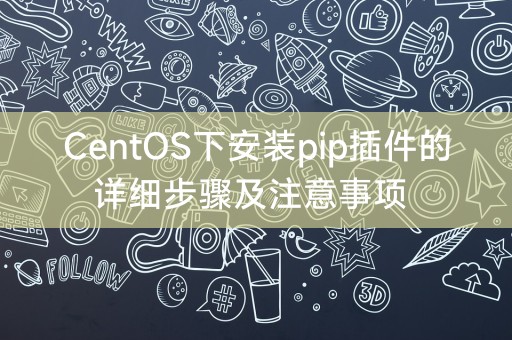
php editor Xinyi will introduce in detail the steps and precautions for installing the pip plug-in under CentOS system. pip is a package management tool for Python that can easily install, upgrade and manage Python packages. Installing pip in a CentOS system requires a series of operations, including installing Python, installing pip, configuring environment variables, etc. At the same time, you also need to pay attention to factors such as system version and network connection. This article will explain you step by step the detailed steps to install the pip plug-in, and provide solutions to some common problems to help you successfully complete the installation process.

You need to install the CentOS operating system. You can download the latest CentOS version from the CentOS official website and install it according to the guidelines of the official documentation. .
1. Open the terminal and log in to the system as the root user.
2. Enter the following command to install pip:
```
yum -y install epel-release
yum -y install python-pip
3. After executing the above command, the system will automatically download and install the pip plug-in.
1. Enter the following command in the terminal to verify whether pip is successfully installed:
pip --version
2. If successful Install, you will see something similar to:
pip 20.2.3 from /usr/lib/python2.7/site-packages/pip (python 2.7)
3. If you look to similar output, indicating that pip was successfully installed.
You can use pip to install and manage third-party libraries and software packages for Python. The following are some commonly used pip command examples:
1. Install software Package:
pip install package_name
2. Upgrade the software package:
pip install --upgrade package_name
3. Uninstall the software package:
pip uninstall package_name
4. List installed packages:
pip list
1. When using pip to install When packaging software, it is recommended to use a virtual environment to isolate the dependencies of each project to avoid interfering with each other.
2. You can execute the pip command with root privileges by adding sudo before the command.
3. When using pip to install software packages, you may encounter dependency or version incompatibility issues. You can solve these problems by consulting official documentation or searching for relevant information.
4. Update pip plugin regularly to get the latest features and security fixes.
Installing the pip plug-in on CentOS is an important step in managing Python packages and libraries. By using pip, you can easily install, upgrade and uninstall Python packages to For your development needs, make sure to follow best practices like using virtual environments and regularly updating pip plugins to ensure system security and stability.
The above is the detailed content of Detailed steps and precautions for installing pip plug-in under CentOS. For more information, please follow other related articles on the PHP Chinese website!




